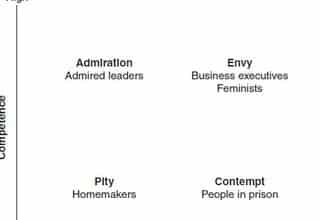Part of being a leader involves providing well-defined feedback. This is easy when we’re delivering good news. However, when our response is a denial, refusal, or veto, there’s a natural desire to sugarcoat the message versus giving a clear-cut rebuff. Peter Farrelly has an entertaining story that may help.
Peter Farrelly is a successful director, screenwriter, producer and novelist. With his brother Bobby, the Farrelly’s are responsible for such hit movies as Dumb and Dumber (One and To), Shallow Hal, Kingpin, and There’s Something About Mary. During a recent appearance on the Nerdist podcast, Peter discussed his childhood obsession with getting a horse. He incessantly pleaded and bartered with his father.
Finally, one day I was begging for the horse and my father said, ‘Pete, you’re never getting a f–cking horse. Get over it. We don’t live on a farm. You’re never getting a f–cking horse.’ You know what? I never thought about a horse again. That second I knew it was over and I moved on…He did me a big favor. Knocked it right out of my head.
When’s the last time you gave such a flat rejection? An employee approaches us with an idea and we want to nurture their entrepreneurial spirit, encourage their creativity, and protect their delicate ego. Instead, we lead them on, give a false sense of hope, and ensure that they’ll continue to make the same mistakes.
Giving a definitive “no” can be uncomfortable, but avoiding discomfort cannot be a leader’s driving motivation. We need to be able to nurture and encourage while simultaneously giving clear direction. Here are a few hints to help with your next “no”:
Be respectful. You may have just heard the worst idea ever. Sure, you’ll never get those five minutes back, but that’s not a reason to be rude. The person talking is engaged and interested in improving the organization. If you are insolent or dismissive, this flow of ideas will stop and innovation will stagnate.
Provide an explanation. A great way to cushion a “no” is by telling the person why it will not work. Provide some big picture perspective, missing details, and/or the realities of the situation.
Give constructive feedback for next time. If you want a culture where people feel involved, you cannot just reject things. Use this time to coach those on your team and prepare them for their next big pitch.
We do our people and our organizations a disservice when we hold back from definitive input. With a clear answer, the individual can begin working on their next idea. As Peter said, “let them know ‘no’ so they can move on, get over it.”








